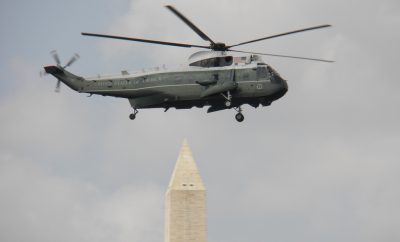 Image courtesy of [http://www.dronethusiast.com/image/AK Rockefeller via Flickr]
Image courtesy of [http://www.dronethusiast.com/image/AK Rockefeller via Flickr]
News
The Drone Papers: The Intercept Releases Massive Report on America’s Use of Drones
The newest massive dump of confidential American military information came this week, and it focused on one much-criticized aspect of American foreign policy: our use of drones in conflict. The information, which was released via an eight-part report entitled “The Drone Papers” by the Intercept, doesn’t look good for the U.S. It contains many shocking revelations, including the fact that nearly 90 percent of the people killed in recent drone attacks in a five-month period in Afghanistan “were not the intended targets.”
The papers, which were released by an anonymous whistleblower only identified as “a source” are secret, classified documents. They encompass the United States’ use of drones from 2011-2013 in conflicts such as Afghanistan, Yemen, Somalia, and Iraq, and outline the chain of command and process through which the United States government approves an attack. They also go through in detail the evolution of the United States’ drone program.
The Intercept–which was founded in the wake of Edward Snowden’s release of NSA documents that clued Americans into the spying being conducted by the U.S. government–has been hinting that it has a new source of information for a while now. So, while this drone report release doesn’t necessarily come as a surprise, it’s hard to deny that the revelations are anything other than grim, and echo the concerns that human rights activists have been uttering since we began using drones as tools for warfare. As the Intercept puts it, what should be understood as a result of the release of these documents is clear:
Taken together, the secret documents lead to the conclusion that Washington’s14-year high-value targeting campaign suffers from an overreliance on signals intelligence, an apparently incalculable civilian toll, and — due to a preference for assassination rather than capture — an inability to extract potentially valuable intelligence from terror suspects. They also highlight the futility of the war in Afghanistan by showing how the U.S. has poured vast resources into killing local insurgents, in the process exacerbating the very threat the U.S. is seeking to confront.
The source also explained his motivations for releasing the information to the Intercept, explaining that the public deserves to know the truth about the American drone program, and stating:
This outrageous explosion of watchlisting — of monitoring people and racking and stacking them on lists, assigning them numbers, assigning them ‘baseball cards,’ assigning them death sentences without notice, on a worldwide battlefield — it was, from the very first instance, wrong,
The Obama Administration has long assured the American people that the use of drone strikes attempted to mitigate civilian deaths–this information seems to indicate that those assurances are simply not accurate. So far the various American government agencies involved, including the Pentagon, the White House, and the Defense Department have all avoided public comment. While mum may be the word for now, Americans will almost certainly start demanding answers, similar to the controversy over the NSA and the Patriot Act after Snowden’s papers were released. That leak fundamentally changed the conversation about privacy in this country–this newest release threatens to do the same when it comes to the use of American military force via drone.








Comments